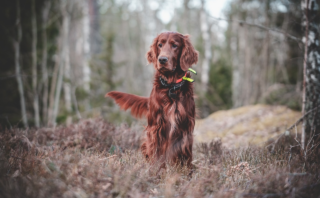1. Introduction
Training a dog can be an enjoyable and educational experience for kids. It not only instills responsibility but also enhances their understanding of animal behaviour. This article will guide children through various dog training techniques, ensuring a fun and fulfilling journey in molding their furry friends. Eager to learn? Let’s get started! [IMAGE_1] After all, puppy training lessons can be as exciting to learn as they are to put into practice.
1.1 The Bond Between Kids and Dogs
The bond between kids and dogs isn’t just about joy and companionship. It’s an educational experience too. By owning and training a dog, children learn responsibility, empathize with another being’s needs, and cultivate patience. When a dog listens to a child, the child gains self-confidence. A well-trained dog is a fine reflection of the cooperation and mutual respect that builds this enriching relationship. Strengthening this bond is central to successful dog training.
1.2 Why Should Kids be Involved in Dog Training?
Involving kids in dog training not only strengthens the bond between them but also teaches invaluable life skills. Kids learn responsibility, empathy, patience and communication. It can also boost their self-confidence. Furthermore, engaging in dog training can be a fun way for kids to stay active. For the dog, this interaction socializes it, strengthening its bond and trust with the family. So this mutually beneficial exercise should be promoted.
2. The Basics of Dog Training: Understanding the Process
Dog training involves teaching a dog to perform specific behaviors, often in response to specific commands. These behaviors may be natural to the dog, like sitting or staying, or they could be more complex tricks. The training usually involves rewarding good behavior, punishing inappropriate behavior (mildly yet efficiently), and maintaining consistency. Understand that patience is key; dogs learn at their own pace, much like humans.
2.1 Understanding a Dog’s Nature and Behavior
Understanding a dog’s nature requires us to delve into canine psychology. Dogs are pack animals by instinct, striving for a social structure and leadership. Their behaviors often mirror survival instincts from their wild ancestors – hunting, establishing territory and communication. By comprehending these aspects, it’s easier to predict behavioral patterns. Remember, a well-mannered dog isn’t born, it’s trained. Therefore, for successful dog training, your child must first understand their furry friend’s mindset.
2.2 The Importance of Consistency
In dog training, consistency is key. This is particularly important for kids, who are still developing a sense of responsibility. Consistent commands and responses help the pet understand expected behaviors. When a command sequence is inconsistently executed, it may confuse the dog. Therefore, children must learn to maintain consistency in voice tone, body language, and rewards, reinforcing the same behaviors to ensure successful dog training.
2.3 The Role of Positive Reinforcement in Dog Training
Positive reinforcement is crucial in effective dog training. This approach encourages desired behaviors by rewarding the dog when it performs correctly. These rewards, typically treats, praise, or playtime, act as motivators. Rewarding good behavior, rather than punishing poor behavior, fosters a positive relationship, builds trust, and promotes eager learning. It’s a powerful, child-friendly method that makes dog training engaging and successful.
2.4 Getting to Know Basic Commands
Mastering basic commands like “Sit”, “Stay”, “Down”, and “Come” is crucial for kids training their dogs. The “Sit” command brings calmness and control. “Stay” helps maintain boundaries. “Down” eases excitable dogs, while “Come” promotes safety. Each command plays a role in building polite doggy behavior. Maintain consistency and patient repetition for improved learning. Use positive reinforcement techniques such as treats or praise to reward your furry friend’s efforts.
3. Simple Dog Training Commands for Kids
Training dogs can be fun and educational for children. The best commands to start with are ‘Sit’, ‘Stay’, and ‘Come’. With ‘Sit’, kids can learn to command their pet to pause and be calm. ‘Stay’ helps establish dominion, teaching the pet not to move until asked. ‘Come’ encourages obedience and bond formation. Remember, patience, and positivity are crucial in dog training.
3.1 The "Sit" Command
Teaching your dog to sit is an effective, beneficial command. Start training with a treat in hand. Bring it close to the dog’s nose, then move it up. As the dog’s head follows the treat, their bottom will lower. Once they sit, say “sit,” give them the treat and share affection. Consistent practice will reinforce this command. Remember, patience is crucial during dog training. Kids learning these techniques are stimulating their canine’s obedience while building a lasting bond.
3.2 The "Stay" Command
The “Stay” command helps your dog cultivate discipline and focus. For kids, this command is not tough to teach. Simply ask your pet to sit, then extend your palm towards them and say “Stay.” Initially, reward the dog immediately, but gradually increase the stay-time prior to rewarding them. This makes your dog understand the command and its reward, therefore imprinting the importance of staying in place when commanded to.
3.3 The "Come" Command
Training a dog to respond to the “Come” command is pivotal for their safety. Kids can easily master this command. Begin by using treats as a lure. Call the dog’s name followed by “Come”, and reward their obedience promptly. Over time, phase out treats, maintaining the verbal cue. Repeat this exercise frequently, making it a fun game rather than a task. Patient, positive enforcement ensures a dog’s consistent response to this command.
3.4 The "Down" Command
The “Down” command is an essential part of dog training. With patience and repetition, it instructs dogs to lie down on cue. It’s most useful during meal times, social events or when you just need your pet to stay still. Remember, kids should use a clear, firm voice without shouting and always reward success immediately. Young trainers should be consistent, confident, and convey love throughout training to stimulate an effective learning environment.
3.5 The "Leave it" Command
The “Leave it” command is paramount in maintaining your dog’s safety and discipline. Briefly, it instructs your pet to ignore or step away from possibly harmful elements. Kids can effectively use this command with consistent practice and patience. Training sessions should be short, fun, and rewarding, using treats or favorite toys as incentives. Remember, persistent reinforcement over time ensures this command becomes second nature to your furry friend.
4. Safety Measures: Ensuring Kids and Dog’s Safety During Training
Keeping children and dogs safe during training is paramount. It’s essential to foster a positive environment that discourages aggressive behavior. Supervised interactions can prevent potential risks. [IMAGE_2] Furthermore, teaching your kid to understand a dog’s body language can significantly reduce unforeseen incidents. Always ensure dog training sessions are short to prevent stress and fatigue. Remember, consistency, reward-based feedback, and patience are crucial in a dog training journey’.
4.1 Supervise All Interactions
Supervising your child’s interactions with a dog is vital. Monitor their playtime to ensure safety for both. Teach your child to approach the dog gently and calmly, avoiding aggressive actions. Reward good behavior from the child and the dog to motivate positive interactions. Always intervene when necessary to prevent possible harm. Remember, dogs respond to tone and energy, hence consistent, calm attitudes from the child will foster a good bond between them.
4.2 Teach Kids the Correct Way to Handle Dogs
Teaching kids to handle dogs properly is crucial and involves essential steps. Firstly, always supervise early interactions. Underline the importance of respect. Kids mustn’t pull tails or ears. Show children the correct method of petting the dog gently. Encourage kids not to disturb dogs while they’re eating or sleeping. Lastly, teach them to understand the signs that a dog may be scared or uncomfortable.
4.3 Set Ground Rules for Training
Establishing ground rules for dog training is essential to creating a disruptive-free environment. Ensure kids understand these rules; like keeping voice levels low, and only using approved commands. Dogs associate behavior with reactions, hence, consistency is vital. Also, reward systems need to be implemented judiciously. Remember, well-defined rules not only facilitate effective training, but also foster respect between the dog and the child, enhancing their bond.
4.4 Dealing with Aggressive Behavior
Aggressive behavior in dogs can be distressing for children. Understanding the cause is key. Often, it stems from fear, territorial issues, or a lack of socialization. Children must learn not to retaliate physically as it may worsen the situation. Instead, involve a professional trainer or a vet to built a treatment plan. Positive reinforcement, limiting triggers, and offering a de-stressing environment can significantly improve the dog’s behavior.
4.5 When to Seek Professional Help
Seeking professional help for dog training should not be viewed as a failure. There are certain situations when it is beneficial. For example, if your efforts to train your pet remain unsuccessful, if your dog exhibits aggressive behaviours, or if the child is fearful of the dog, it might be time. Professionals have the needed experience to efficiently address and solve such issues, promoting a healthy relationship between your child and dog.
5. The Benefits of Dog Training for Kids
Dog training provides immense benefits for kids, including responsibility development. Through training, they learn the importance of consistency, patience, and empathy. The interactive aspect of training aids in improving kids’ communication skills. Moreover, it strengthens the bond between the kid and their pet, fostering mutual respect and understanding. Altogether, dog training surfaces as a potent tool to instill life skills and nurturing relationships for children.
5.1 Enhancing the Bond Between Kids and Dogs
Bonds between kids and dogs are unique and can be strengthened through dog training exercises. These exercises impact positively on their relationship. Children can learn respect for animals while dogs grow accustomed to their human counterparts. Teaching commands, like “sit” or “stay”, gives kids responsibility. Walking the dog empowers children by establishing a leadership role. Overall, these interactions foster a bond of mutual trust and loyalty.
5.2 Developing Responsibility and Compassion in Kids
Training dogs gives kids an important lesson about responsibility. Daily tasks, such as feeding, walking, and grooming, instil valuable habits. Compassion is nurtured when kids understand dogs’ needs, showing patience and kindness to their pets. Addressing a dog’s fears and anxieties also helps kids learn empathy. Hence, dog training empowers kids with a sense of duty and compassion, while also strengthening the bond between the child and their pet.
5.3 Teaching Kids Patience and Perseverance
Teaching children patience and perseverance is crucial, especially during dog training. The process isn’t always smooth. Kids must learn to remain calm and persistent despite setbacks. They must understand that training takes time, and each dog learns at its own pace. Through dog training, children can learn valuable lessons in patience and perseverance, which are important life skills beneficial beyond the realm of pet ownership.
5.4 Contributing to the Dog's Behavioral Development
In the realm of dog training, kids can play a crucial role. They contribute massively to a dog’s behavioral development. Children’s playful nature garners mutual respect and understanding between the kid and the pet. Regular playful interaction, maintaining boundary settings, and consistency in rewarding good behavior and reprimanding bad ones help in manifesting a well-behaved dog. Therefore, kids aren’t just involved in training but in shaping the dog’s overall behavior.
6. Conclusion
In summary, dog training for kids not only strengthens the bond between your children and their pet, but also leads to a well-behaved dog. It provides valuable opportunities for teaching responsibility and nurturing. By ensuring a safe, positive environment, and using methods such as rewards, games, and patience, kids can effectively train their dogs in a fun, educational way. This experience is both rewarding and beneficial for the child and the dog alike.
6.1 Quick Recap of Dog Training for Kids
In dog training for kids, children learn to communicate with our furry friends. Key steps include teaching basic obedience, such as sit or stay, using positive reinforcement methods. They learn responsibility through feeding and grooming. They also gain a deeper understanding of dog’s behaviors, body language, and cues. These experiences not only foster a strong child-dog bond but also teach empathy, patience, and assertiveness – valuable lessons for life.
6.2 Final Thoughts on the Importance of Dog Training for kids
Dog training teaches kids responsibility and empathy by putting them in the pet’s paws. It enhances their social skills and fosters a loving bond with the animal. In essence, training dogs isn’t just beneficial for the canine, but significantly contributes to the child’s emotional and social development.
Frequently Asked Questions
1. What is the appropriate age for kids to start dog training?
Children as young as three years old can start learning about dog training. However, the level of involvement and responsibilities should be age-appropriate. For example, younger kids can help with feeding or playing with the dog, while older kids can participate in obedience training or walking the dog. It’s important to always supervise young children when they are interacting with dogs.
2. What are some basic training commands kids can teach dogs?
Basic commands that kids can teach dogs include “sit,” “stay,” “come,” “lie down,” and “quiet.” These commands are simple and straightforward enough for kids to handle. Remember to instruct your child to use a firm, clear voice when giving commands, and to always reward the dog with praise or a treat when it obeys.
3. How can I ensure my child’s safety during dog training?
Always supervise any interaction between your child and the dog especially during training sessions. Teach your child to understand dog body language and respect the dog’s space. Also, it’s important to instruct your child to never approach a dog while it’s eating, sleeping, or caring for puppies.
4. How can dog training be made fun for kids?
Dog training can be made fun by turning it into a game. For instance, you can have a race to see who can get the dog to sit faster. Rewards and praises not only for the dog but also for your child can also make the activity more enjoyable. Including interactive toys and using treats during training sessions can also make it more engaging.
5. Can kids train a dog without prior experience?
Yes, even without prior experience, kids can learn to train a dog. However, it’s recommended that they first learn from an experienced adult or a professional dog trainer. There are also numerous books and online resources specifically designed to help kids understand dog behavior and training techniques.
6. How can dog training benefit kids?
Dog training can teach kids about responsibility, empathy, and patience. It can also boost their self-esteem as they see the results of their consistent efforts. Furthermore, it provides a good opportunity for kids to bond with their pets.
7. What should my child do if the dog doesn’t listen?
It’s normal for dogs, especially puppies, to not always follow commands. Teach your child to remain patient and consistent, and to never resort to punishment. If the dog is consistently disobedient, it may be a good idea to consult with a professional trainer for guidance.
Conclusion
In conclusion, dog training for kids is not only beneficial but also a fun, educational activity that instills important values such as patience, responsibility, and empathy. It provides an excellent opportunity for children to form a stronger bond with their pets while at the same time learning about animal behavior and communication. Furthermore, it is an effective method for ensuring that the family pet is well-behaved, reducing the potential for behavioral problems in the future.
However, it is crucial to remember that every dog is unique, and what works for one may not work for another. Children should be guided and supervised by adults during the training process to ensure safety for both the child and the dog. With the right approach, dog training for kids can be a rewarding and enriching experience that teaches valuable life lessons, while also creating a harmonious home environment.



